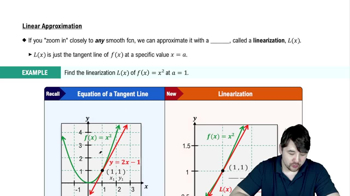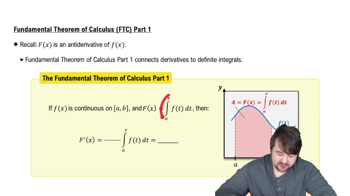Linearization for Approximation
In Exercises 7–12, find a linearization at a suitably chosen integer near a at which the given function and its derivative are easy to evaluate.
f(x) = ∛x, a = 8.5
 Verified step by step guidance
Verified step by step guidance Verified video answer for a similar problem:
Verified video answer for a similar problem:

